Jeffrey Gibson: American. Native American. Gay. An artist’s life outside labels

- Share via
Jeffrey Gibson has long felt like an outsider. Born in Colorado Springs, Colo., in 1972, he grew up in West Germany and South Korea, where his father, a member of the Mississippi Band of Choctaw Indians, worked for the Defense Department supplying goods to U.S. military bases. Gibson remembers being treated as an American abroad, his identity as a Native American — part Choctaw, part Cherokee — pretty much invisible.
That changed only when he returned to the U.S. to attend the Art Institute of Chicago, where he earned a bachelor of fine arts degree in 1995. The irony of being back in the country of his birth — and being treated as if he did not belong — was not lost on him.
Gibson’s understanding of his identity grew even more layered in London, where he earned a master’s degree at the Royal College of Art in 1998.
“Being a gay man but not having experienced the generation of AIDS made me feel something like survivor’s guilt,” he said. “But survivor’s guilt is not the right term. I was not a survivor. I felt more like an observer.
“It’s the same with racial identity. Because I didn’t grow up in a Native community, I would ask myself, ‘Am I a participant?’ ‘Am I an observer?’ ‘Where do I stand in there?’ ”
Those questions get answered — beautifully and boldly — in an exhibition of Gibson’s latest work at the Roberts & Tilton gallery in Culver City. The six paintings and two sculptures that make up “In Such Times” reveal that Gibson has finally come home. No longer an outsider, he has created a place for himself in which his sense of belonging is palpable.
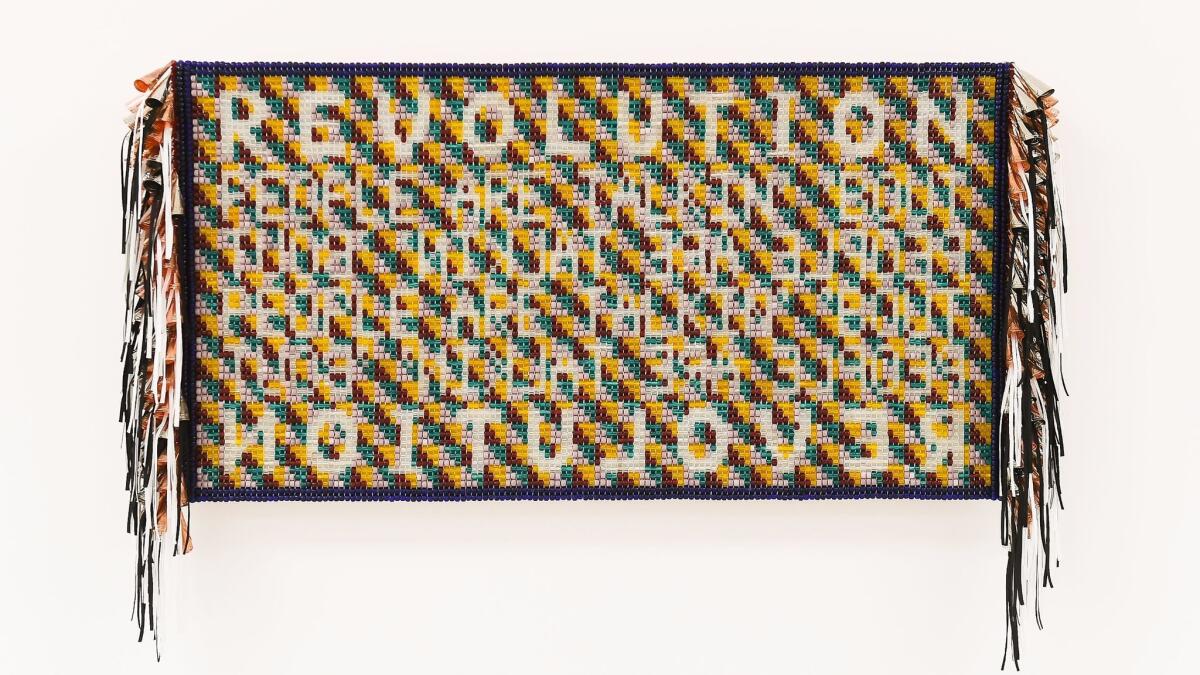
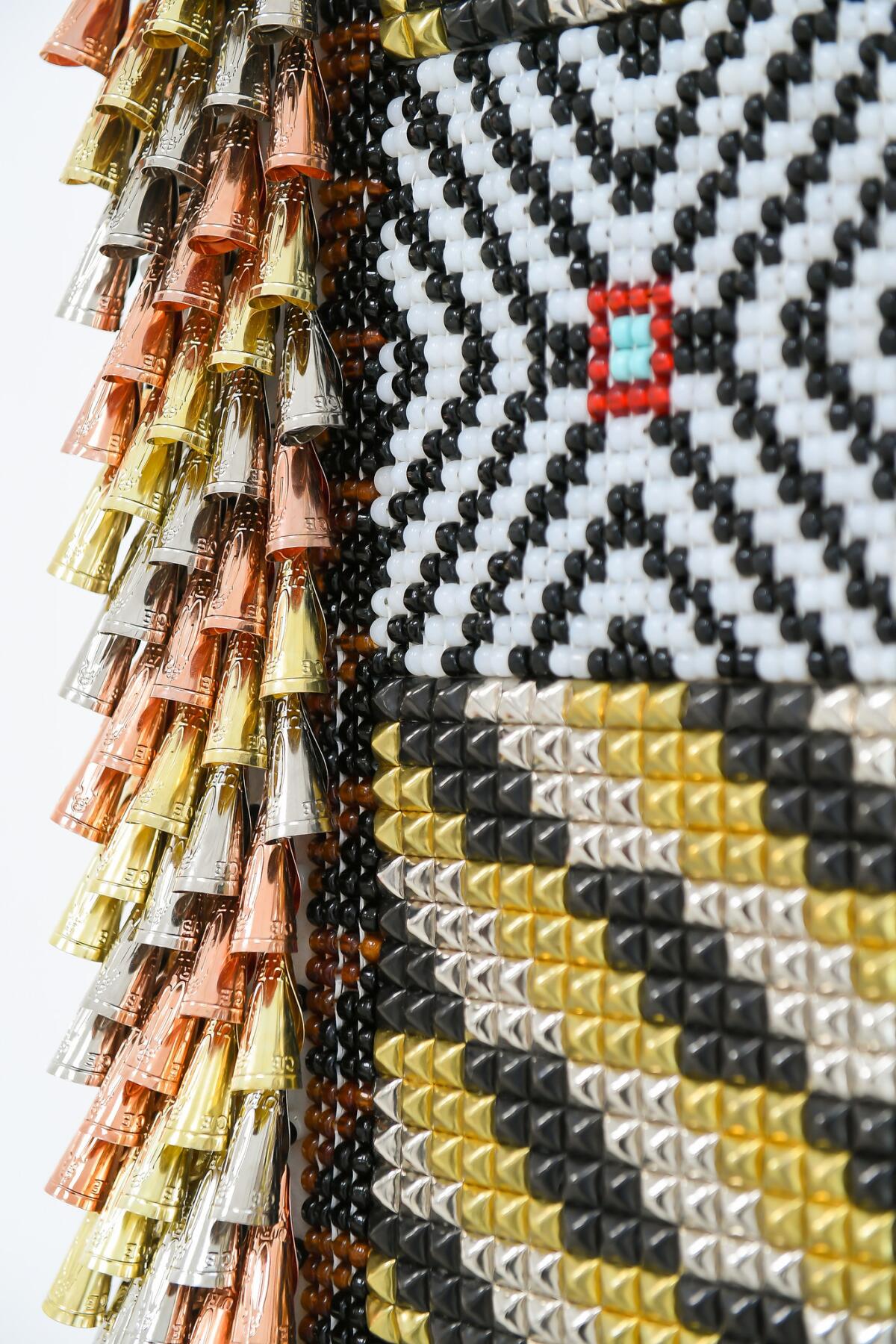
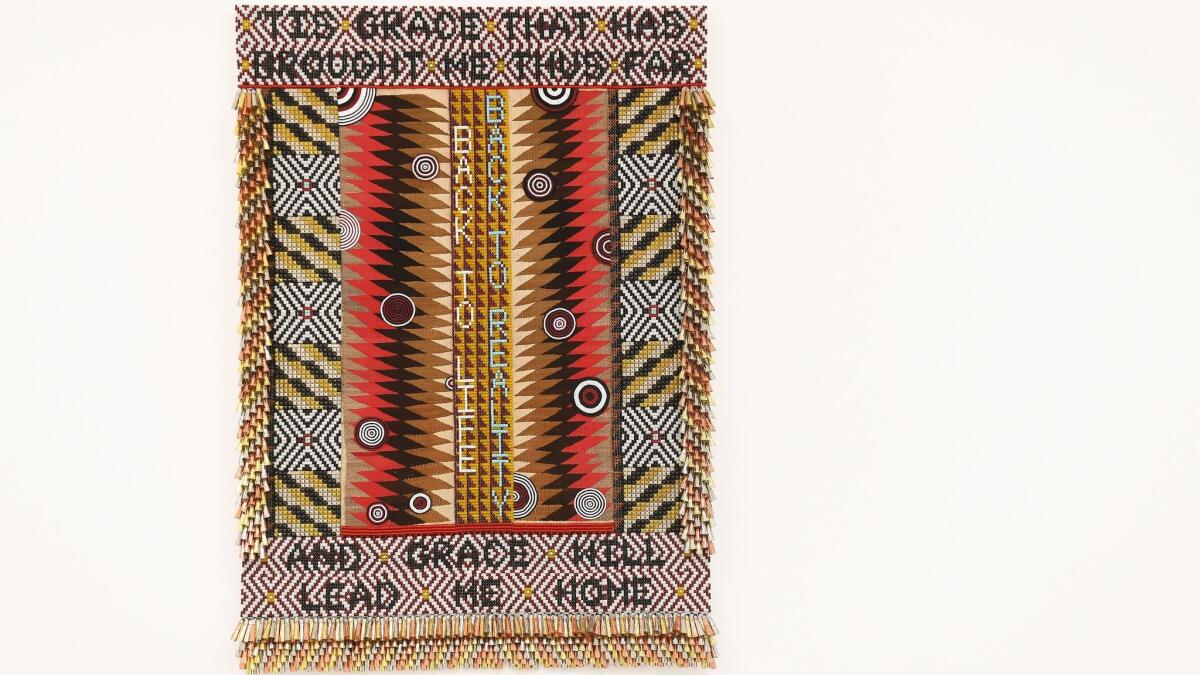
The complexities of identity have always fueled Gibson’s art. Until about five years ago, he said, “I was feeling very troubled, very blocked by the limited perceptions of being Native American. I was trying to extract them from myself, to kick them out of my system. Making work was a way to do that. It was therapeutic.”
The art world wasn’t embracing his ideas, he said, so he didn’t think they were worth pursuing. Even people interested in Gibson’s work hemmed him in.
“Every studio visit I had turned into me doing Native American Art 101,” he said. “People came in with zero to no knowledge. It was simplistic. So I wasn’t developing myself.”
But then something changed — a transformation that coincided with Gibson’s move with his partner (now husband), Norwegian artist Rune Olsen, from Brooklyn to upstate New York, where they bought a schoolhouse in Germantown, population 1,800, and converted it into studios.
Gibson’s current works layer Native American beadwork, trading post blankets, metal studs, fancy fringes and jingles — dangling decorations for powwow regalia worn by Native American women that were once made from the lids of snuff and tobacco canisters but are now mass-produced in Taiwan in gold, silver and bronze.
Lyrics by Grace Jones, Prince and the Beatles, as well as phrases by Nelson Algren, Raymond Carver and E.E. Cummings appear in Gibson’s works, which also visually riff off prints by Sister Corita Kent, paintings by Jean-Michel Basquiat and sculptures by Jimmie Durham, not to mention whole movements like Op, Pattern-and-Decoration and image-and-text Conceptualism.
Viewers are treated to a complex cocktail of beauty and ugliness. The bright colors and bold patterns of Gibson’s pieces neither hide nor deny the history from which they have sprung. And that history isn’t pretty. It’s filled with injustice and suffering, inhumanity and worse.
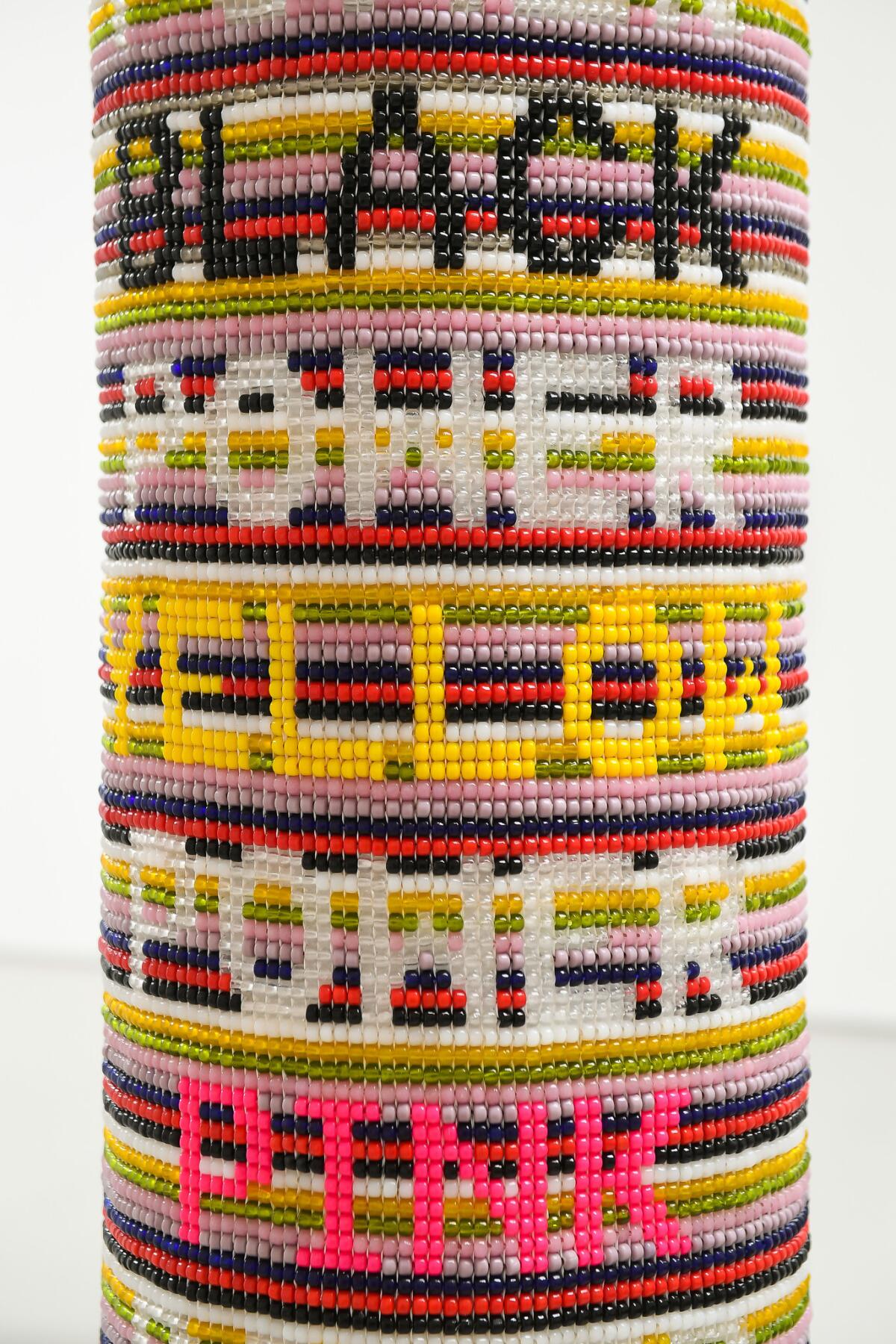
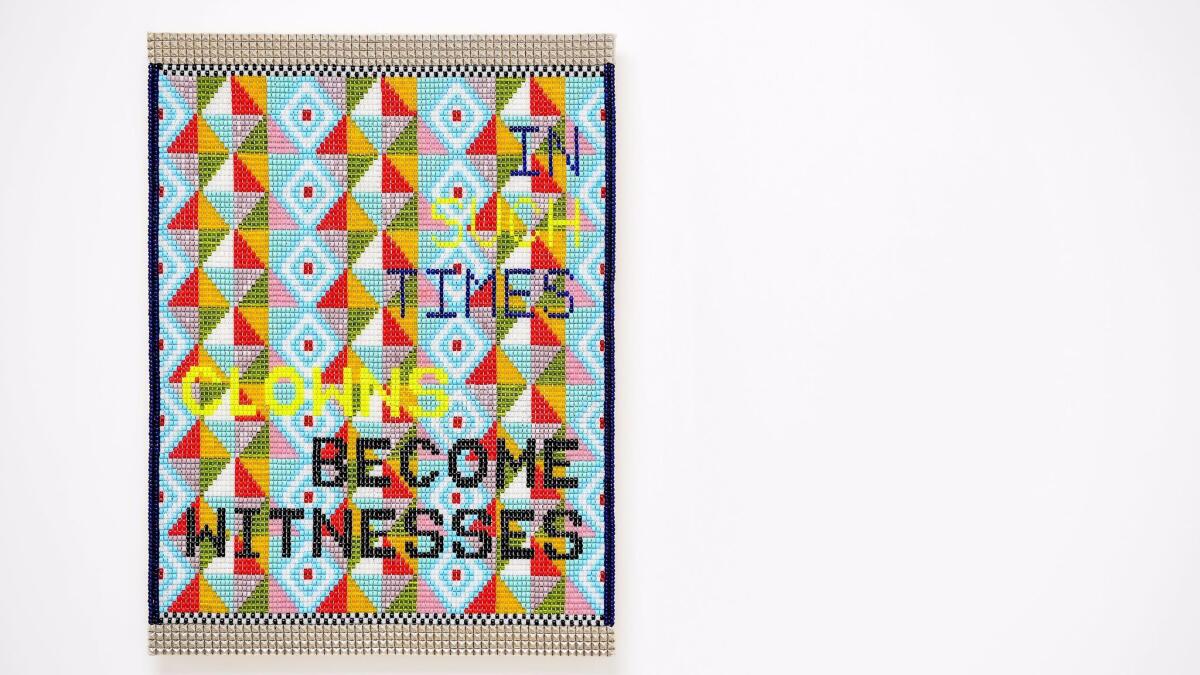
“I am really in conversation with myself,” Gibson said. “The thoughts move in a much more poetic way, a much more visual way. There’s a lot more experimentation. It’s allowed the materials to be more than what they immediately present themselves to be. It’s allowed me to do things I wouldn’t have done.”
Those things will be the focus of a large traveling exhibition that opens in May at the Denver Art Museum and features works Gibson has made from 2011 to 2017.
“Jeffrey has really arrived,” said John P. Lukavic, the museum’s associate curator of Native arts. “What you see today could not have been made five years ago.”
Lukavic said Gibson “has been able to create something that no one else has because of his deep understanding of and sensitivity to indigenous arts and to modern art history. He seamlessly brings them together in a strong, developed vocabulary — in a blended aesthetic — that is 100% Jeffrey.”
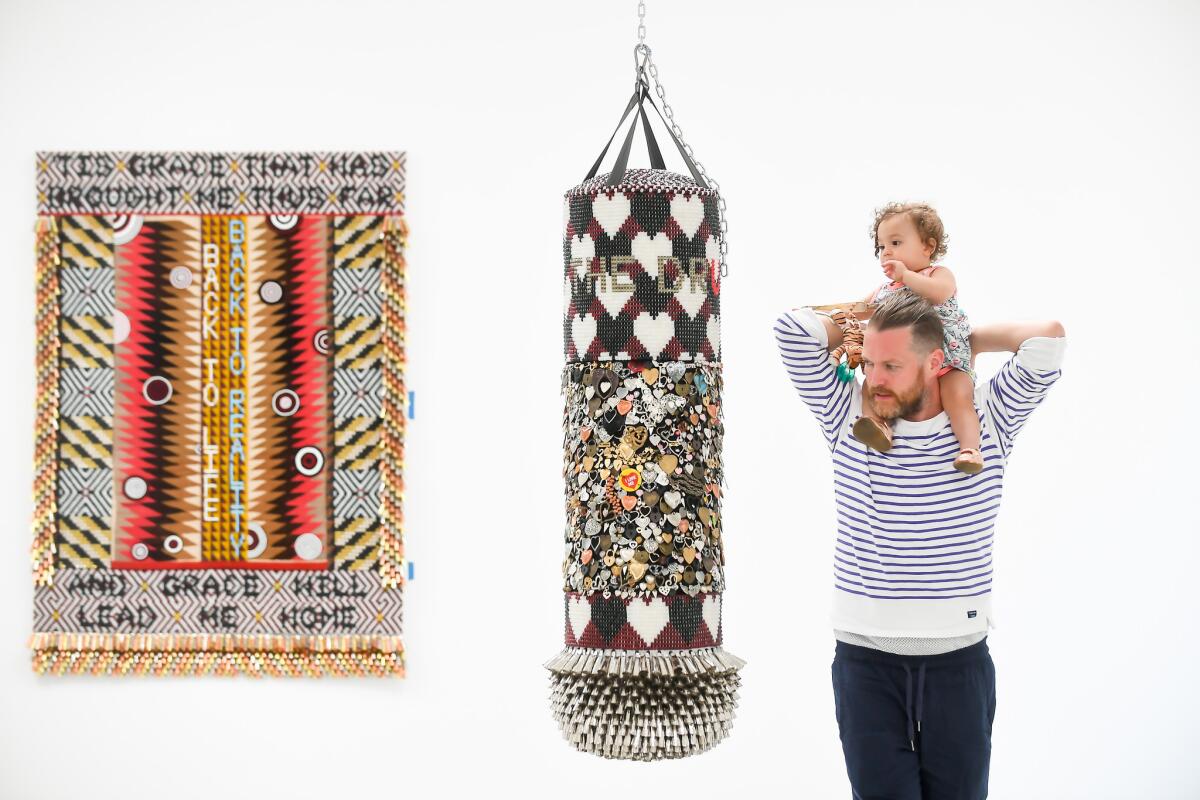
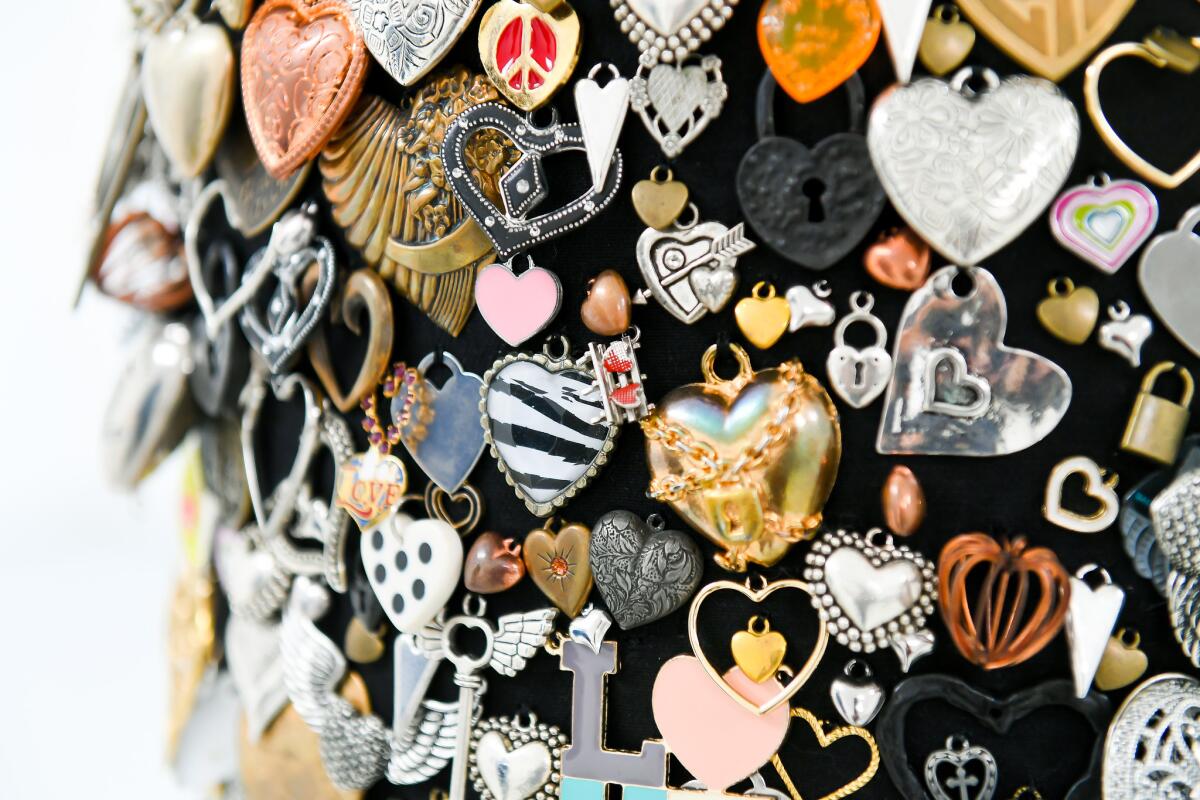
SIGN UP for the free Essential Arts & Culture newsletter »
Gibson did that by imagining what indigenous works might have looked like, throughout the 20th century, if they had been in an intimate dialogue with the contemporary art of their times. His current works grow out of that conversation, which has moved from his imagination to the real world.
Elizabeta Betinski, executive director of Desert X, worked with Jeffrey as he and a team of interns transformed the blade of a wind turbine into a sleek painted sculpture installed in the Palm Springs Art Museum’s sculpture garden. She sees no limits to the power of Gibson’s art: “Jeffrey is one of the most important artists of our time. He could not be more other. At the same time, his work is so universal. He’s adding to the world at large. There aren’t many artists like that.”
Gibson said his work has been acknowledged more in the last five years. “It’s getting shown, getting discussed. It’s valued,” he said. “Now I am trying to take advantage of these circumstances and put together a body of work that speaks to this time we’re in and really genuinely to who I am.”
He continued: “I am proud of being American. Having grown up in other countries, I think in America the problems we have here result from there being a tremendous mix of perspectives. There’s no real way of tying it all up in a neat bundle. We’re going to have endless disagreements. It’s messy for a reason. It’s not like we’re all sorted-out people and the mess is just drama. It’s real.”
In that chaos, Gibson finds freedom. That feeds his creativity. The mechanisms of capitalism and consumer culture, and their effects on the environment, financial markets and the divide because poor and rich — these are reasons why he wants his art to speak to an American audience.
“I understand why other Native American artists do not want to engage with the contemporary art world, with the world beyond Native communities,” he said. “But I have grown up in that in-between place. It would be disingenuous for me to cut a large part of my life out.”
Exhibit information:
Where: Roberts & Tilton
5801 Washington Blvd., Culver City
When: Through Oct. 21; closed Sundays and Mondays.
Contact: (323) 549-0223, www.robertsandtilton.com
Support coverage of the arts. Share this article.
MORE ART NEWS AND REVIEWS:
Interview with Ai Weiwei and the global refugee crisis
Anna Maria Maiolino and art about being a woman
Why David Geffen is pledging $150 million for LACMA’s new building
The biggest entertainment stories
Get our big stories about Hollywood, film, television, music, arts, culture and more right in your inbox as soon as they publish.
You may occasionally receive promotional content from the Los Angeles Times.







